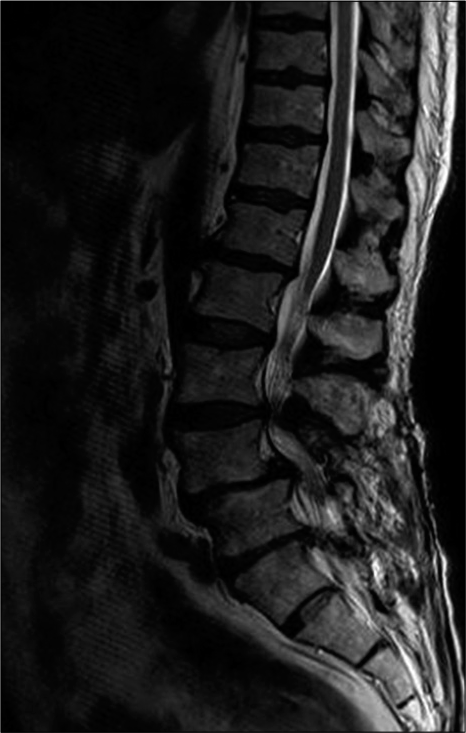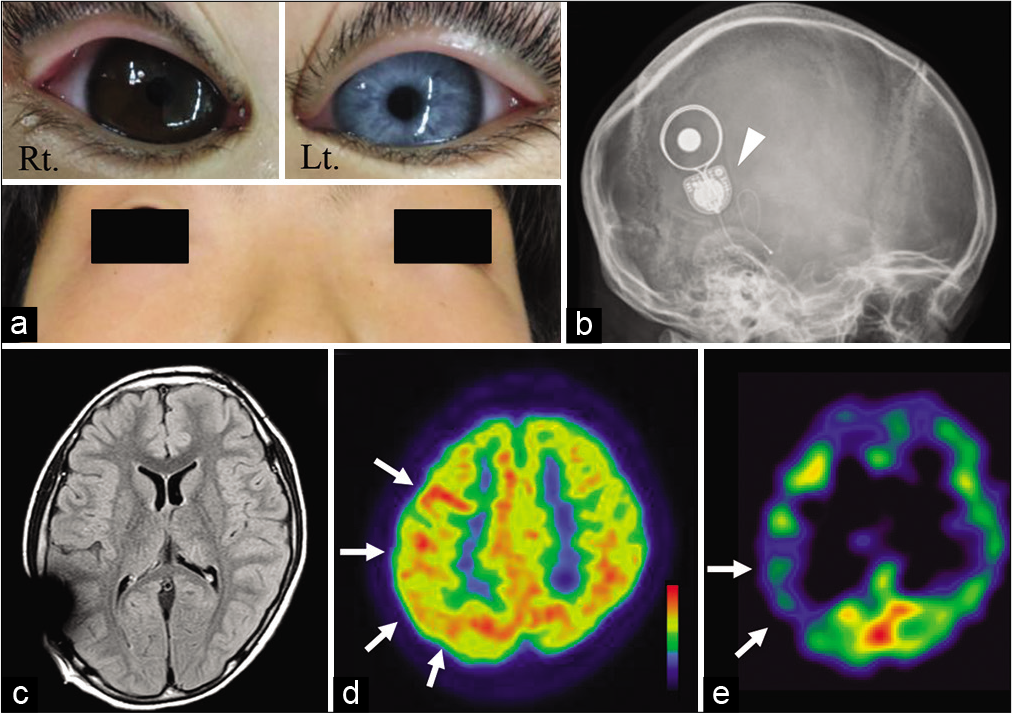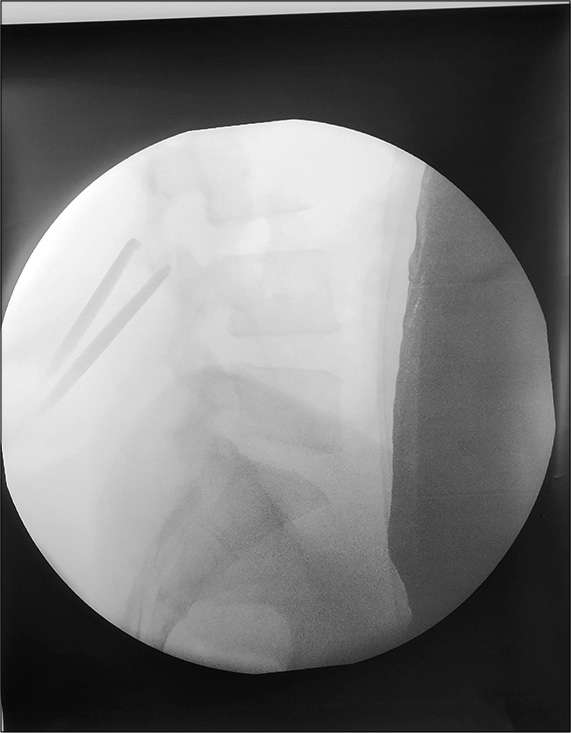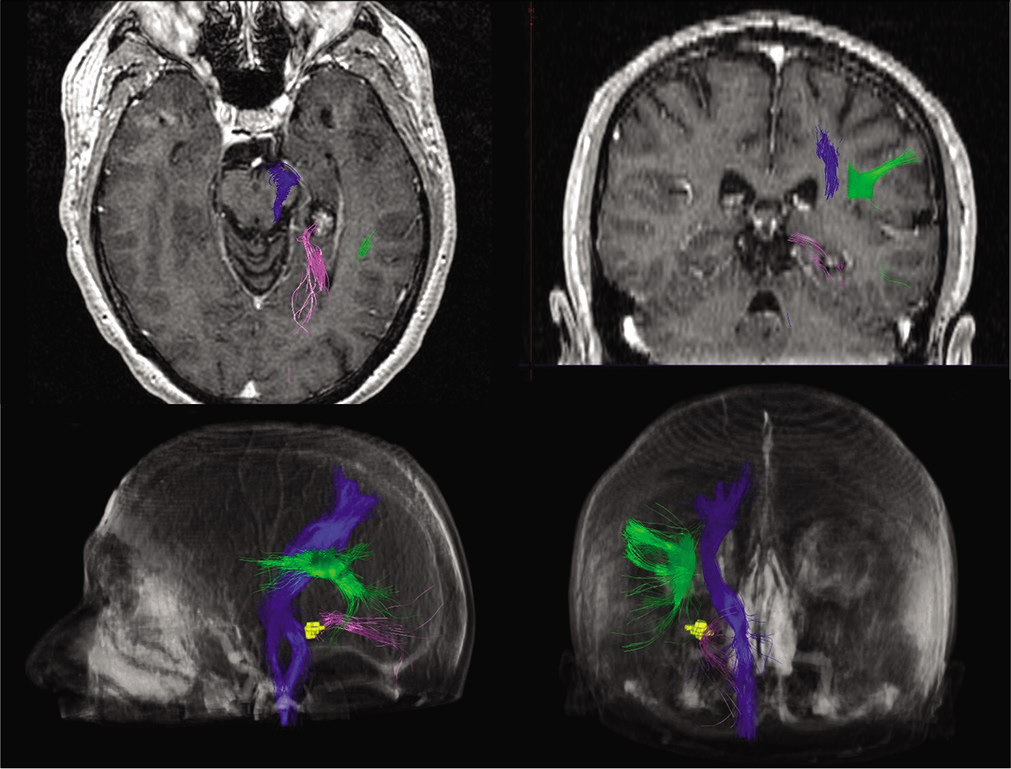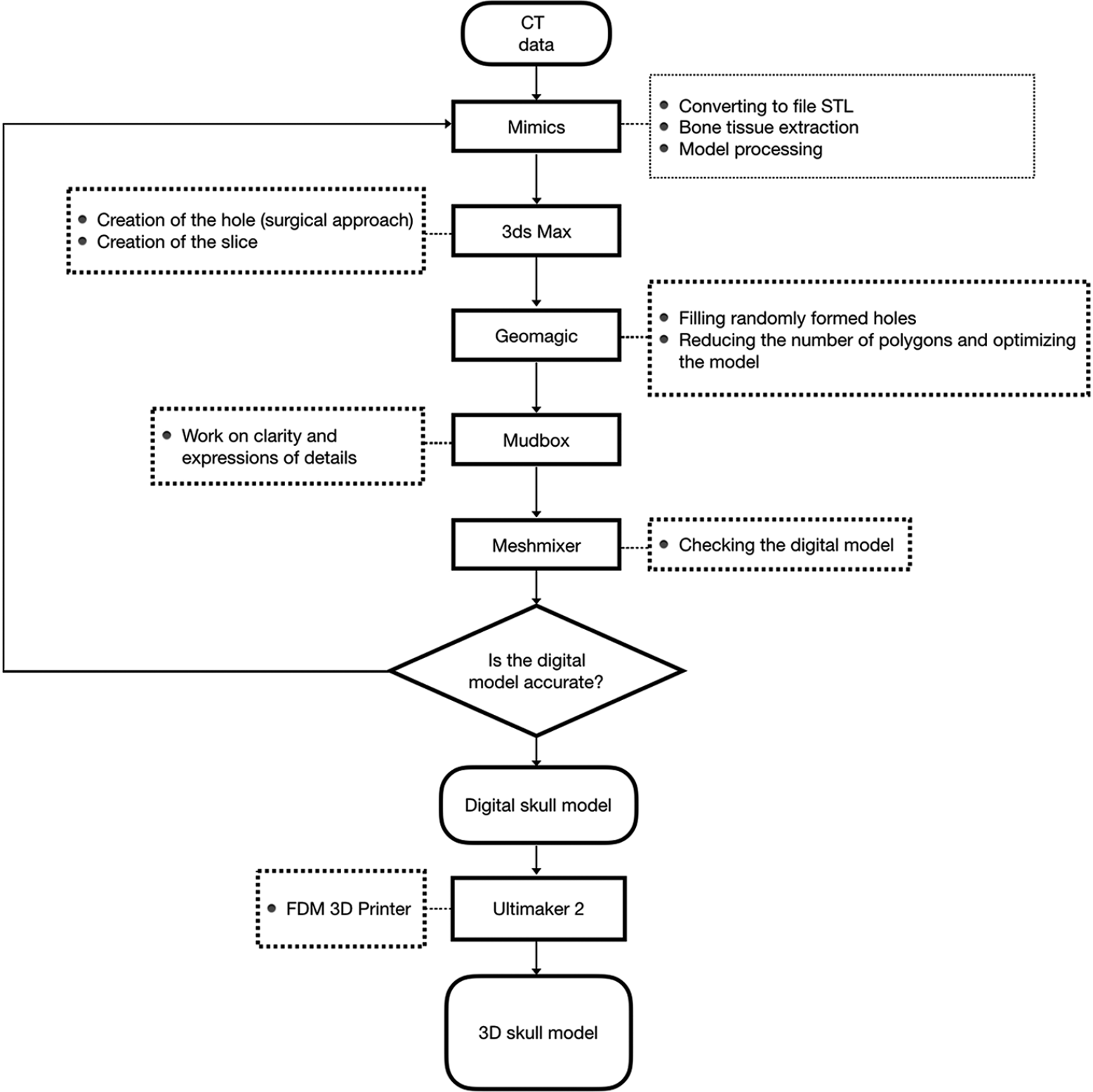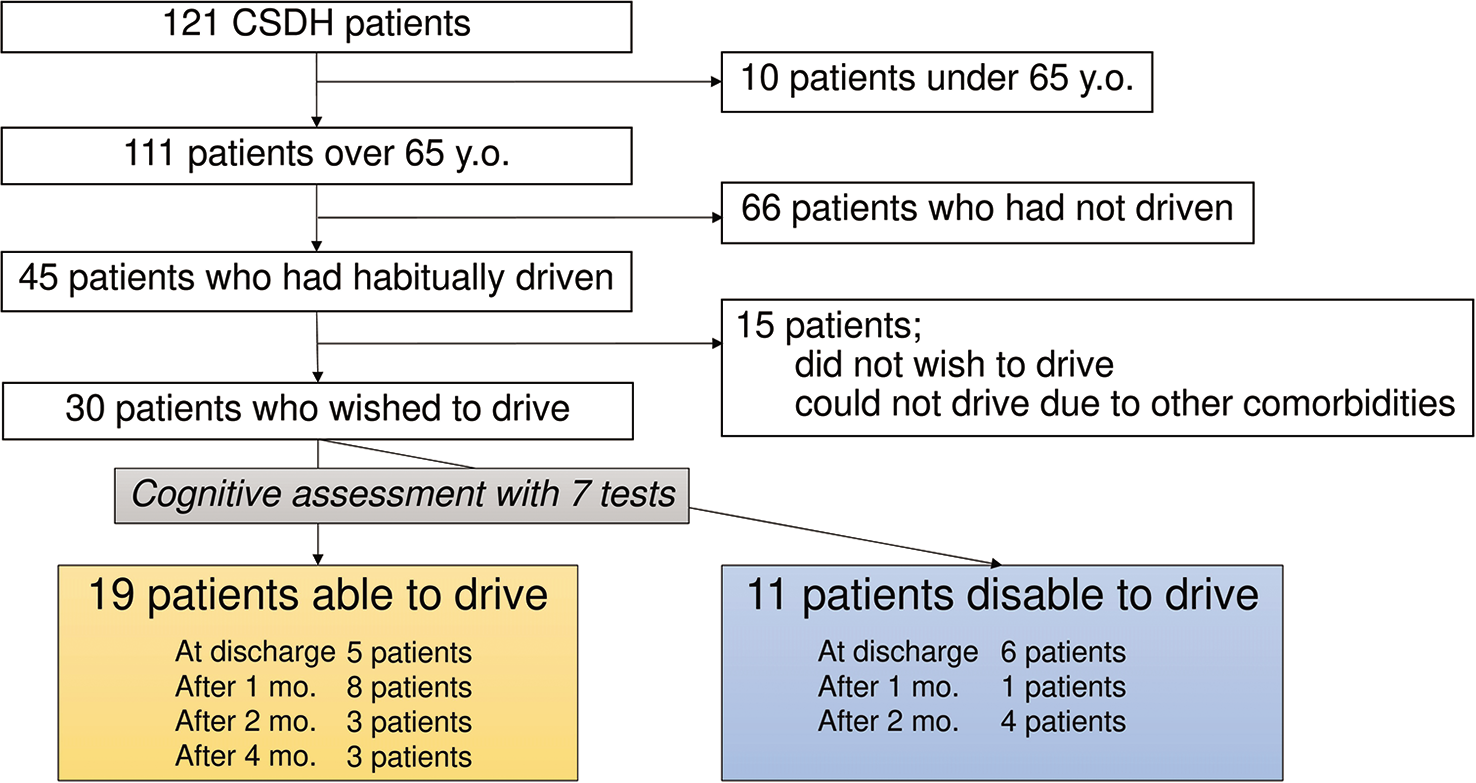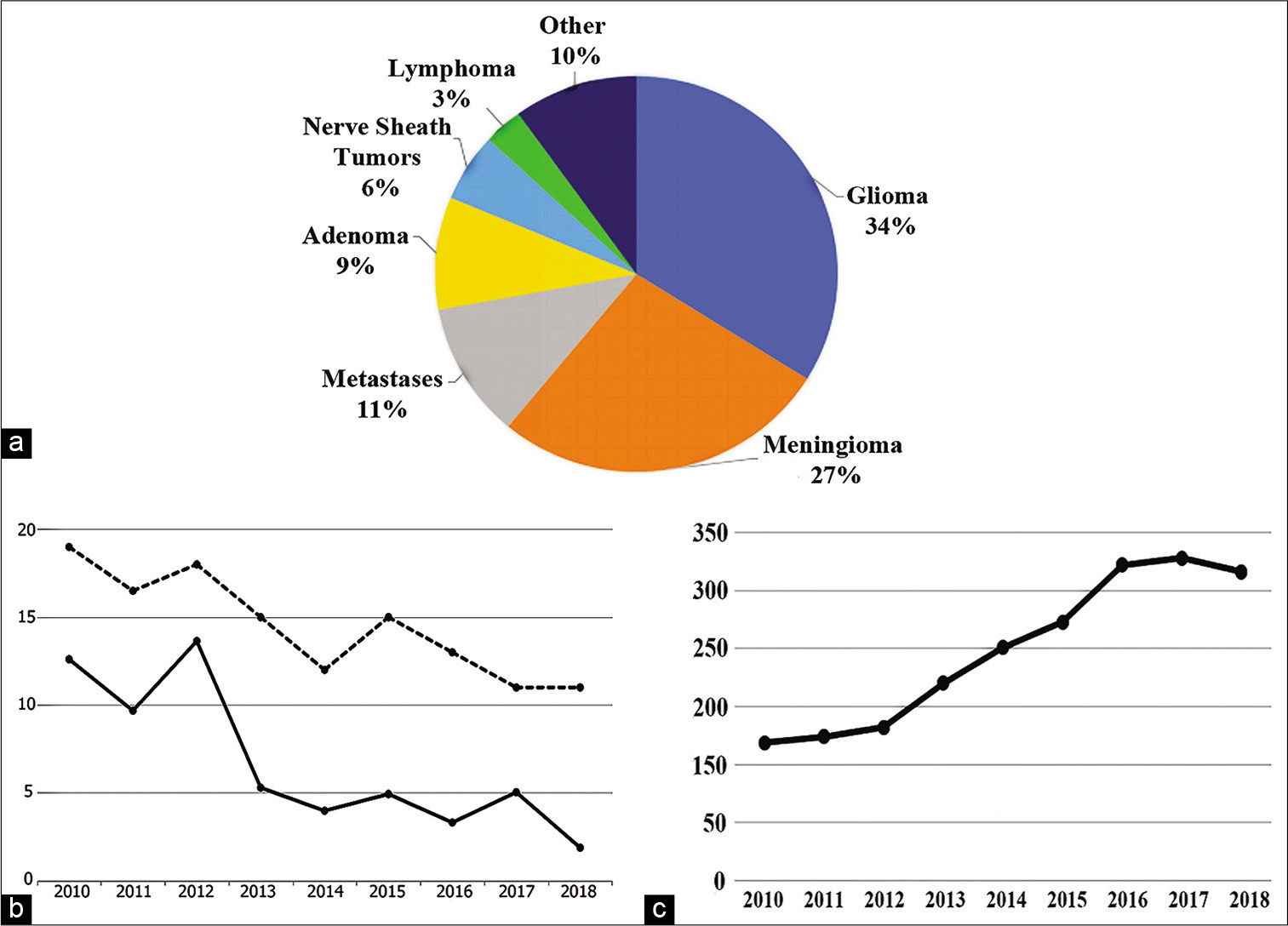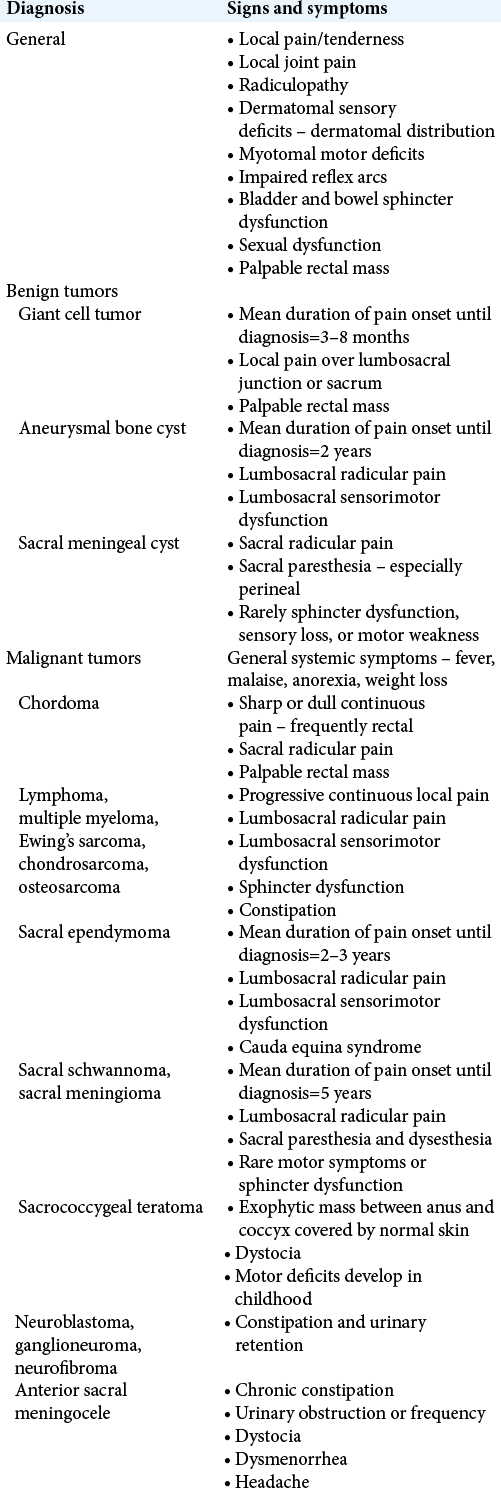Role of redundant nerve roots in clinical manifestations of lumbar spine stenosis
Date of publication: 10-May-2021
Background: Redundant nerve roots (RNRs) are defined as elongated, thickened, and tortious appearing roots of the cauda equina secondary to lumbar spinal canal stenosis (LSCS). The study compared the clinical and radiological features of patients with LSCS with versus without RNR.
Corpus callosotomy for drug-resistant epilepsy in a pediatric patient with Waardenburg syndrome Type I
Date of publication: 10-May-2021
Background: Waardenburg syndrome (WS) is caused by autosomal dominant mutations. Since the coexistence of epilepsy and WS type I is rare, the detailed clinical features and treatment of epilepsy, including surgery, have not been fully reported for these patients. We report the first case of an individual with WS type I, who underwent corpus callosotomy (CC) for drug-resistant epilepsy and obtained good seizure outcomes.
Management of symptomatic disc herniation in pregnancy: A case report and literature review
Date of publication: 10-May-2021
Background: Lower back pain with radiculopathy due to a disc herniation occurs in about 0.01% of pregnant females. Surgical intervention is seldom required unless there is intractable pain, and for a significant neurological deficit. Further, the use of intraoperative ionizing radiation may adversely affect the developing fetus.
Supracerebellar transtentorial approach for left parahippocampal cavernous malformation
Date of publication: 10-May-2021
Background: Lesions in the temporomesial region can be reached by various approaches: subtemporal, transsylvian, transcortical, interhemispheric parieto-occipital, or supracerebellar transtentorial (SCTT). The choice varies according to the characteristics of the lesion and neighboring structures.
Microsurgical treatment for cerebellomesencephalic fissure arteriovenous malformations after multiple sessions of endovascular treatment
Date of publication: 10-May-2021
Background: Arteriovenous malformations (AVMs) are relatively uncommon congenital vascular anomalies, and only 7–15% of AVMs occur in the posterior fossa. Most posterior fossa AVMs clinically present with hemorrhage and are associated with a high risk of neurological deficits and mortality. These malformations are associated with a high incidence of flow-related aneurysms. Endovascular treatment of infratentorial AVMs is challenging in pediatric patients.
3D-printed cranial models simulating operative field depth for microvascular training in neurosurgery
Date of publication: 10-May-2021
Background: The skills required for neurosurgical operations using microsurgical techniques in a deep operating field are difficult to master in the operating room without risk to patients. Although there are many microsurgical training models, most do not use a skull model to simulate a deep field. To solve this problem, 3D models were created to provide increased training in the laboratory before the operating room, improving patient safety.
Chronic subdural hematoma in patients over 65 years old: Results of using a postoperative cognitive evaluation to determine whether to permit return to driving
Date of publication: 10-May-2021
Background: Chronic subdural hematoma (CSDH) is usually associated with good recovery with burr hole irrigation and postoperative drainage under local anesthesia. In Japan, traffic accidents by the elderly drivers over 65 years old are severely increasing, and there is no consensus on whether or not to return to driving after CSDH treatment. We perform a postoperative cognitive assessment. We retrospectively investigated the return-to-driving rate and associated factors.
Trends in hospital stay and outcome of CNS tumor patients in Greece during the socioeconomic crisis period (2010–2018): The case of the academic neurosurgical department at Evangelismos Hospital
Date of publication: 03-May-2021
Targeting gut dysbiosis as a means to enhance recovery from surgical brain injury
Date of publication: 03-May-2021
Background: Surgical brain injury (SBI) impacts roughly 800,000 people who undergo neurosurgical procedures each year. SBI is the result of unavoidable parenchymal damage, vessel disruption, and thermal injury that is an inherent part of all neurosurgical procedures. Clinically, SBI has been associated with postoperative seizures and long-term neurobehavioral deficits. Current therapies are aimed at providing symptom relief by reducing swelling and preventing seizures. However, there are no therapies aimed at reducing the extent of SBI preoperatively. The microbiome-gut-brain axis may serve as a potential target for the development of new preventative therapies due to its extensive involvement in central nervous system function.
Clinical manifestations, classification, and surgical management of sacral tumors and the need for personalized approach to sacrectomy
Date of publication: 03-May-2021
Background: Although comprising 7% of all spinal tumors, sacral tumors present with a litany of issues due to their slow growth and difficulty in detection. As a result, sacral tumors can grow unperturbed for years until a patient presents for an incidental workup of an unassociated minor trauma or an offending primary tumor source that has metastasized to the sacrum; in most cases, this includes primary tumors of the breast, prostate, and lung. The goal of this review is to outline the pathophysiology underlying sacral tumors including the various tissues and structures that can be targeted for treatment, along with a discussion of the surgical approach to sacrectomy.


